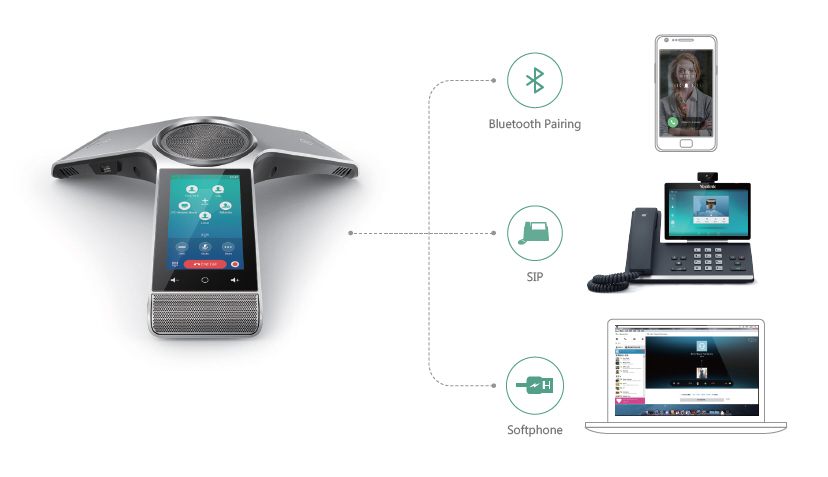Introduction: The Future of Communication
In today's fast-paced business environment, communication plays a pivotal role in ensuring success. Traditional phone systems are gradually becoming obsolete, replaced by more efficient and cost-effective solutions like VoIP phone systems. But how does one integrate this modern technology into an existing infrastructure seamlessly? Let's dive deep into the world of VoIP phone systems and uncover how they can enhance your current setup.
Understanding VoIP Phone Systems
What is a VoIP Phone System?
A VoIP phone system (Voice over Internet Protocol) allows users to make calls using the Internet rather than traditional phone lines. This technology converts voice into digital packets and transmits them over the web, allowing for enhanced flexibility and reduced costs.
How Do VoIP Phone Systems Work?
At its core, a VoIP phone system works by capturing your voice as data, compressing it for speedy transmission, and then sending it over the internet. This method not only cuts down on infrastructure costs but also offers features like voicemail-to-email, video conferencing, and much more.
Key Benefits of Using VoIP Phone Systems
- Cost Efficiency: Lower monthly bills compared to traditional landlines. Scalability: Easily add or remove lines as needed. Advanced Features: Access to features like call forwarding and auto-attendants without extra charges.
Seamless Integration: Enhancing Your Existing Infrastructure with a VoIP Phone System
Integrating a VoIP phone system into your existing infrastructure doesn’t have to be challenging. With the right approach, you can ensure that everything works together smoothly. Here’s a step-by-step guide on how to achieve seamless integration:
1. Assess Your Current Infrastructure
Before diving headfirst into integration, it's crucial to assess your current infrastructure. Identify what equipment is already in place and determine any upgrades necessary for compatibility with your new VoIP system.

2. Choose the Right VoIP Service Provider
Not all service providers offer the same features or reliability; choosing one that aligns with your business needs is paramount. Look for providers that offer robust support services and scalable solutions.
3. Ensure Adequate Bandwidth
A common hiccup when integrating a VoIP phone system is inadequate bandwidth. Test your internet connection’s speed; aim for at least 100 kbps per simultaneous call for optimal performance.
4. Upgrade Your Network Equipment
If your existing routers or switches https://privatebin.net/?ad02bd43a58b815e#2cqFhramVGYzEETKjG7EAWvXnr1LHZ19BFNUjD9HTc2p aren't capable of handling VoIP traffic efficiently, consider upgrading them. Quality of Service (QoS) settings can prioritize voice traffic ensuring minimal disruption during calls.
5. Implement Security Measures
Security should never be an afterthought when integrating any new technology. With a VoIP system, implement encryption protocols like Secure Real-time Transport Protocol (SRTP) to protect your communications from eavesdropping.
Exploring Advanced Features of VoIP Phone Systems
1. Unified Communications
Unified Communications (UC) combines various communication tools such as voice calls, video conferencing, instant messaging, and email into one platform. This can enhance collaboration within teams significantly.

2. Mobility Solutions
With remote work becoming increasingly common, mobility solutions offered by many VoIP providers allow employees to take their office number anywhere they go—using mobile apps or softphones on their laptops.
3. Call Analytics
Many modern VoIP phone systems come equipped with analytics tools that allow you to track call metrics like duration and frequency which can help improve customer service strategies.
Challenges During Integration & How to Overcome Them
While integrating a new system can yield significant benefits, there are also challenges that may arise:
1. Training Staff on New Technology
Transitioning to a new system often requires training staff on how to use it effectively:
- Provide hands-on training sessions. Share user manuals or video tutorials.
2. Technical Difficulties During Setup
Technical issues may pop up during installation:

- Partner with experienced IT professionals who understand both traditional telephony and VoIP technologies.
3. Potential Downtime During Transitioning
Downtime can negatively impact business operations during transition:
- Schedule installations during off-peak hours.
FAQs About Integrating VoIP Phone Systems
li8/ol1/li9li9/ol2li10# Can I keep my existing phone numbers?- Yes! Most providers support number porting, allowing you to keep your current numbers without interruption.
- While most providers are transparent about costs, always clarify what’s included in the monthly fee before signing up.
- Many providers offer failover options that automatically redirect calls through cellular networks if internet connectivity fails.
Conclusion: Embracing Change for Better Communication
In summary, embracing a VoIP phone system can transform how you communicate within your organization while enhancing productivity and reducing costs in the long run. By focusing on seamless integration—assessing current infrastructure needs, choosing the right provider, ensuring adequate bandwidth, upgrading network equipment if necessary—you set up your organization for success in today’s digital landscape.
The future is here; don't let outdated communication methods hold you back! It's time to leverage Seamless Integration: Enhancing Your Existing Infrastructure with a VoIP Phone System and watch as it positively impacts every aspect of your business communication strategy!